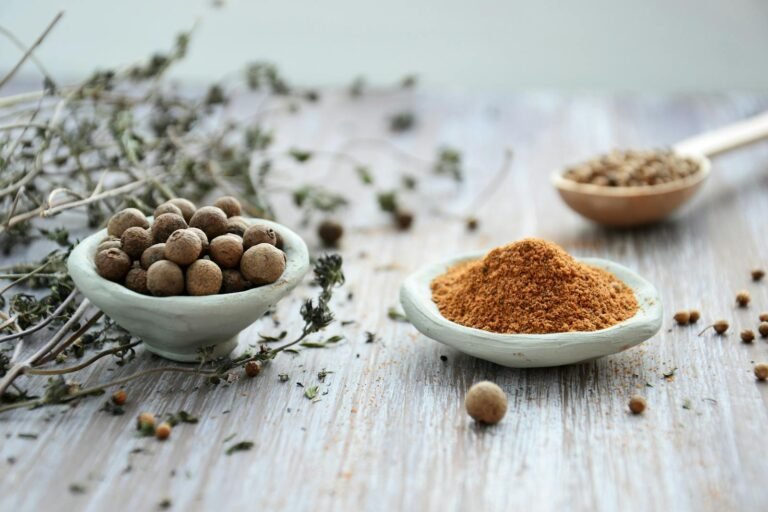Import
The cone It is a small but mighty seed, full of history, aroma and nutritional value.
It comes from the pine tree — a tree that characterizes Mediterranean nature — and has been an integral part of Greek cuisine for centuries.
If you have tried it on stuffed, salads or in the classic pesto, you already know that pine nuts give that subtle, buttery flavor that elevates any dish.
But behind its tasty role, there is a hidden superfood rich in good fats, vitamins and antioxidants.
What is a pine nut?
The cone is the edible seed of the pine tree.
More specifically, it comes from the mature pine cones of certain pine species, such as Pinus pinea, which grows widely in the Mediterranean.
It takes time and patience to get to our hands — a pine nut can take up to three years old!
It is collected with care: the pine cones are left to dry so that they open naturally and release the seeds.
The seeds are then peeled from the outer shell, revealing the golden core we know as cone.
Is pine nuts a nut?;
Yes, it is considered a nut, but with special composition.
Unlike almonds or walnuts, it has softer texture and rich in oils, which give it its characteristic flavor.
Pine nut in Cypriot
In Cyprus, pine nuts are also called “koukounosporos” or “koukounotherma”, depending on the local dialect.
It is used in the same way in traditional recipes, such as rice with raisins or stuffed, but also in Christmas sweets.
Nutritional value & health benefits
The cone it's a small energy miracle.
A handful (about 30 g) contains good fats, protein, vitamins and minerals that contribute to heart, skin and brain health.
Nutrients
- Good fat: rich in omega-3 and omega-6 fatty acids
- Plant-based protein: ideal for vegans and vegetarians
- Magnesium & potassium: contribute to the proper functioning of muscles and the nervous system
- Zinc & iron: strengthen the immune system
- Vitamin E: powerful antioxidant for skin and hair
Health benefits
Strengthening the cardiovascular system
Its "good" fats help in reducing bad cholesterol (LDL) and increasing good (HDL).
Sugar and energy regulation
Thanks to its composition, it releases energy gradually, without sudden increases in blood sugar.
Diet support
Although it is high in calories, it causes saturation, helping to control hunger and appetite.
Skin and hair health
Vitamin E protects cells from oxidation and contributes to natural skin glow and the hair strengthening.
Anti-inflammatory action
Polyphenols and antioxidants in pine nuts help reduce inflammation, especially in those who follow a Mediterranean diet.
Attention
- Allergies: as with other nuts, pine nuts can cause allergic reactions.
- Maintenance: due to its oils, it spoils easily if not stored properly.
Uses in cooking
The cone It is extremely versatile and adds flavor to dozens of dishes.
Salads
Add it roasted to green salads with pomegranate, spinach or arugula.
Its crunchy texture balances beautifully with fresh vegetables and sweet and sour flavors.
Stuffed and rice
Classic combination of Greek cuisine: rice with pine nuts and raisins, ideal for dolmades or stuffed meats.
It gives aromatic balance and rich flavor.
Pesto
The authentic Italian pesto it doesn't exist without it.
Whipped with basil, garlic, parmesan and olive oil, it gives a velvety texture and rich aroma.
Sweet
From halva with pine nuts to cookies or energy bars, this seed adds depth and flavor.
Creative ideas
- Risotto with pine nuts and vegetables
- Stuffed with pine nuts and raisins
- Green salad with pine nuts and pomegranate
- Honey and pine nut cookies
How to store it properly
This nut is rich in natural oils, so it needs careful storage.
- Place it in airtight container.
- Keep it to yourself. cool, dark place, away from light and moisture.
- In the summer months, prefer the storage in the refrigerator or even in the freezer.
- If a strong odor or bitter taste emerges, it means it has gone rancid.
Pine Cone: Culture & Symbolism
The cone It's not just a tasty treasure — it's also a symbol.
Since ancient times it has been associated with longevity, fertility and abundance.
We see it in statues, in ornaments, and in traditional decorations.
Even today, they are used in ceramics, wreaths and celebrations, as a symbol of good luck.
Frequently Asked Questions (FAQ)
What is a pine nut?;
It is the edible seed of the pine tree, rich in nutrients and with a unique flavor.
Is a pine nut a nut?;
Yes, but it stands out for its soft texture and beneficial oils.
What are pine nuts good for?;
In the heart, skin, energy and immune system.
Which animal eats pine nuts?;
Squirrels and birds love it.
What is the pine nut called in Cyprus?;
“Coconut seed” or “coconut kernel”, depending on the region.
Is there an allergy to pine nuts?;
Yes, for people with nut sensitivity.
Instead of pine nuts, what can I put in?;
Almonds, walnuts or hazelnuts are alternative options in recipes such as pesto.
Interesting Fun Facts
- A pine nut is needed 2-3 years to mature.
- It has been used since ancient times in Mediterranean diet.
- Today it is considered gourmet fruit due to the high cost of collection and cleaning.
- In China and India it is used as natural energy stimulant.
Conclusion
The cone It is a small, but impressively valuable fruit.
With a delicate flavor, a nutty aroma and a wealth of nutrients, it is an ideal ally in the Mediterranean diet.
Whether you put it in salad, in pesto, either in traditional stuffed, offers a dose of luxury and health to your plate.
Such a small ingredient — but with so much great value for taste and body.


